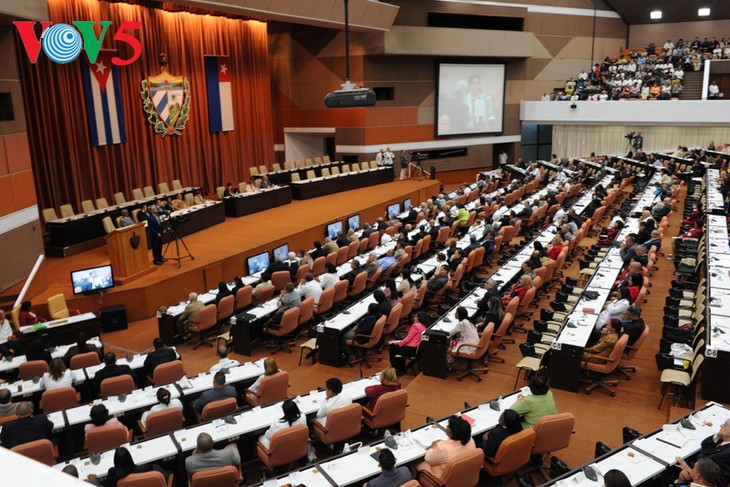(VOVWORLD) - Cuba has started a historic transition in which President Raul Castro will step down and hand over his power to a younger successor meaning that for the first time in half a century, Cuba’s leader will not be a Castro family member. The Cuban people are hoping the new leader will continue Cuba’s achievements.
 Cuba's 9th National Assembly convenes its first session Cuba's 9th National Assembly convenes its first session |
During the past two days, the 9th Cuban National Assembly has convened its first session to elect a President and Vice President of the State Council for the next five-year tenure. More than 100 foreign correspondents are covering the event.
Miguel Diaz Canel Bermudez, the first Vice President of the State Council is the only candidate for the posts of State Council President and Ministers’ Council President.
Though Raul Castro is stepping down as Cuba’s President, he will remain the First Secretary of the Cuban Communist Party until 2021.
Reform milestones
Raul has stood shoulder to shoulder with his late brother Fidel since the early days of the Cuban revolution which pulled down the dictatorship, wrested back independence, and developed Cuba. In 2006, Raul became the temporary leader of Cuba when Fidel became ill. In 2008, he became the Cuban President, Head of the State Council, and Head of the Ministers’ Council.
During Raul’s two tenures, Cuba carried out economic reforms and opened its market to attract private and foreign investment. In late 2011, Cuba started allowing individuals to buy and sell houses. In 2014, Cuba’s automobile was liberalized. It revised its laws to promote foreign investment and inaugurated the huge Mariel port, 45 km east of Havana. With its economic reforms, Cuba’s economy grew 1.6% last year. Despite US strict travel restrictions, Cuba received more than 4.7 million foreign visitors in 2017.
Cuban children enjoy free education and elderly people receive free medical treatment. Ensuring gender equality is one of Cuba’s major achievements: half of Cuba’s legislators are female, second in the world. The Cuban government has given its people access to the internet by installing public wifi networks nationwide.
In 2014, Raul announced that it would be Cuba’s policy to become closer with the US. A year later, Cuba and the US resumed diplomatic relations. In March 2016 President Raul welcomed US President Barack Obama in Havana.
Successive change in leadership
Raul nominated Bermudez as the First Vice President of the Cuban State Council in 2013.
For years, Cuba has been preparing its leader’s succession. The average age of the 605 NA deputies is 49, 9 out of 17 members of the Party Political Bureau were born or grown up in the revolution and most of them have gone through several posts. They are considered a bridge connecting the younger generation with their predecessors.
Cuba follows the collective leadership principle which means all guidelines and policies must be adopted at Party Congresses after collecting the people’s opinions.
In the last 6 decades, Cubans have been confident of the revolutionary path they chose. Despite the challenges that lie ahead, they believe their new leader will steer Cuba forward.